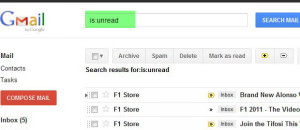How To Identify Buying Intent and Optimize Sales Strategies
For any business, understanding the buying intent of its customers proves integral to making strategic decisions and boosting sales. The mistake many entrepreneurs and business owners make is to focus solely on driving traffic without considering their customers’ underlying needs and wants. The idea behind buying intent is as straightforward as it sounds—it helps you identify potential customers who are likely to make a purchase. In this article, we delve deeper into buying intent, discussing its significance, how to identify it, and ultimately leverage it to optimize sales strategies. Keep reading to learn more.
Understanding Buying Intent

Buying intent goes beyond identifying who is interested in your product or service to identify who is primed to purchase. Buying intent involves the integration of a multitude of signals, such as behavioral patterns, trends, and data analysis, transforming them into actionable insights that drive conversions.
Businesses can tailor their marketing and sales strategy by identifying the buying intent. It helps businesses allocate their time, resources, and effort more efficiently, focusing on high-potential leads rather than spending time nurturing those unlikely to make a purchase.
Moreover, buying intent allows marketers to understand customer needs deeply at different stages of their journey. By doing so, they can personalize their marketing approach, which helps build stronger, more profound relationships with potential customers. When businesses understand their customers’ needs, they become more effective in providing solutions that consumers want, leading to improved customer satisfaction and loyalty.
Identifying Buying Intent
Key indicators of buying intent include customer interactions with the business, the frequency and depth of engagements, and the sourcing and analysis of relevant transactional data. Practices such as tracking customer’s online behavior, analyzing trends and data, and frequent customer interaction can significantly aid this process.
Beyond these indicators, purchasing history, client testimonials, and demographic data can also serve as helpful insights for identifying buying intent. For instance, customers who make frequent purchases or leave positive feedback display high buying intent. Understanding how these elements interconnect can help businesses better understand their customers’ needs and predict future behaviors fittingly.
Another crucial method of identifying buying intent is through predictive analytics. Emerging technologies, particularly those leveraging artificial intelligence (AI) and machine learning (ML), offer robust platforms for predicting buying intent. These technologies map out customer behaviors, analyze patterns, and provide forecasts on the likelihood of a purchase, significantly reducing the time it takes to identify prospective buyers.
Leveraging Buying Intent for Sales Optimization
A well-understood and accurately identified buying intent becomes a valuable tool for sales optimization. It allows businesses to segment their target audience according to unique behavior patterns, purchase history, and demographics. As such, businesses can tailor their marketing campaigns to individual segments, allowing for more personalized messaging catering specifically to each unique audience.
Furthermore, understanding buying intent helps devise strategic sales funnels that effectively guide a prospect through the purchase journey. From creating awareness about the product to influencing the final purchase decision, businesses can tailor each funnel stage according to the buyer’s unique needs and preferences. This approach facilitates a higher conversion rate and fosters customer loyalty and retention in the long run.
Preparing Your Business for Buying Intent

The primary prerequisite to leveraging buying intent is a solid understanding of your customer base. This involves investigating and understanding their preferences, needs, goals, and obstacles. By equipping yourself with these insights, you’ll be better positioned to spot high-intent behavior and respond to it effectively.
Fostering a culture of data-driven decision-making in your organization is also essential to maximize the benefits of buying intent. Integrating advanced analytical tools in your business operations to collect, analyze, and interpret consumer data will streamline the identification of buying intent and the development of tailored marketing strategies.
When effectively implemented, buying intent strategies have the potential to drive high conversions, increase revenues, and foster customer loyalty. To truly leverage the power of buying intent, a business must be ready to embrace data-driven strategies, predictive analytics, and an unwavering focus on its customers.








